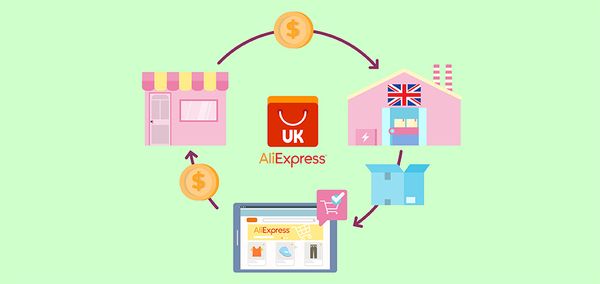Local SEO for Dropshipping: Targeting Nearby Customers for More Sales

What if your dropshipping store was the go-to place for shoppers around a specific city or region? SEO can make that dream possible. Visualize customers in your area search for products you offer, and your store comes up at the top in their search results, ready to deliver just what they need.
Local SEO is the magic behind converting your online store into the talk of the town. This guide will walk you through dropshipping local SEO to win more customers than ever, boost visibility for your store, and take your dropshipping business to new heights.
How Does Local SEO Work
Local SEO promotes a website in a specific region, city, or even metro station and targets users who care about the location of a business. For example, when looking for a gym near the office or food delivery near your home.
This is an important part of any SEO for dropshipping. Search engines consider the user's device and location when showing results, so geo-location is especially important for businesses with a limited area of operation.

|
Find Better Supplier For Products DSers Supplier Optimizer - One click to filter out the most proper suppliers for your products |
Can Local SEO Be Effective for Dropshipping
Most dropshippers think that local SEO does not matter because they sell to anyone in the world. But focusing on specific regions can actually boost your sales, even in a global business.
Think about it: when people search "buy yoga mats near me" or "buy best running shoes in Williamsburg," they are ready to buy. These searches are indicative of clear buying intent. By targeting such searches, you will be very different from faceless online stores. You'll be their local go-to shop.

|
Manage Multiple Stores In One Account Multiple Stores Management - Link and manage multiple stores on different platforms in one place |
Trust is huge in dropshipping, and many local buyers don't like to worry about shipping times and return hassles. When they see you're optimized for their area, displaying clear shipping times from regional warehouses, they will likely choose you over generic stores.
You can get really granular with this approach. If you're dropshipping winter gear and your supplier has a warehouse in Minnesota, target keywords locally during the winter. Add landing pages showing the time to delivery in specific geographic locations. That sounds way cooler than "5-7 days shipping." Instead, say, "Get your winter boots tomorrow in Minneapolis."
The best part? Local SEO dropshipping is your chance to shine. While most entrepreneurs fight over general keywords, you can dominate local searches and build a loyal customer base in specific regions.
Local SEO Strategies to Optimize Your Dropshipping Stores
Now, we will discuss seven actions to implement local dropshipping SEO.
1. Plan Local SEO
Planning is the backbone of any local SEO strategy for your dropshipping store. Without planning, efforts will be scattered and less effective. First, study successful case studies.
Research various dropshipping stores with effectively implemented local SEO strategies. Look for detailed case studies that analyze their approaches to driving traffic and increasing conversions in specific locations. Focus on:
- How they targeted local customers
- The keywords and local content they used to capture the attention of local customers
- How they managed online reviews and engagement with local customers
Then, investigate your audience. Use Google Trends, Google Analytics, and other social media insights to find out where a majority of your customers reside. Study local buying behavior, preferences, and seasonal trends. For example, if you sell winter gear, focus on regions with cold climates and adjust your marketing calendar accordingly.
Keep yourself updated by following blogs, tutorials, and guides published by reputable SEO platforms. For example, this SEO blog by SE Ranking provides actionable tips to drive local traffic and optimize for eCommerce businesses. It will keep you abreast of the best practices and emerging trends.
After planning, you'll have a roadmap created according to your needs for the dropshipping store.
2. Research Local Keyword
For dropshipping, the right keywords make all the difference. Focus on phrases that combine product and location, such as:
- "Best [product] in [City]"
- "[City] online store for [product]"
- "Fast shipping to [City]"
Target customers searching for nearby services by including terms like "dropshipping suppliers in [Region]." Stay ahead by analyzing local shopping habits. For example, integrate trends like:
- "Eco-friendly products in [City]"
- "Popular fashion items in [Region]"
These localized terms can help you reach buyers who are actively searching for relevant products in your area.
3. Localize Your Website Content
Make your website feel personal and connected to the local market. Some effective approaches include:
- Location-specific landing pages for cities or regions where you operate
- Blog posts tied to local interests or seasonal events, like “Top 5 Gifts for Valentine’s Day in Chicago”
- A FAQ section addressing local shipping or pickup options to build trust with local buyers
This targeted local content boosts search rankings and strengthens your connection with local customers.
4. Build Local Links
Link building locally increases your store's authority and prominence in local search. Start by finding out what backlink opportunities are available with strong local presence websites.
You can collaboratewith local bloggers and influencers. Partner with bloggers or influencers in your region who cater to audiences aligned with your niche.
For example, if you’re selling kitchen gadgets, connect with local food bloggers for reviews or promotions.
Then you can do local events. Sponsor events, do a giveaway, or participate in some sort of charity in your community. Sometimes, these types of activities can spur mentions and backlinks from event organizers, community-focused websites, or even local news websites.
Moreover, you should list your business in local directories. List your business in valid local directories, such as the U. S. Chamber of Commerce or regional business directories. This starts to build local relevance and authority online.

Lastly, you should seek partnerships. Network with complementary businesses in your locality for backlinking with each other. For instance, if you sell fitness gear, network with any local gym and ask them to give you links.
Local link building can be the real booster of your dropshipping local SEO.
5. Customer Reviews and Testimonials
Customer reviews and testimonials build not only trust but also can improve your rankings in local search results. Here are ways to encourage and optimize customer local-based feedback:
Smoothen the review process
Send follow-up emails after each purchase, requesting customers to leave feedback. Provide direct links to your Google Business Profile or other review platforms like Yelp.
Incentivize reviews
Give discounts, coupons, or entry into a giveaway in exchange for honest reviews. Make sure this is compliant with the platform guidelines to avoid penalties.
Showcase testimonials
Showcase positive reviews on your website or product pages for credibility and use real customer photos or videos.
Respond to reviews
Make sure to reply to all reviews, whether they are positive or negative. Thank happy customers. Address concerns with actionable solutions to show your care in providing great service.
Customer reviews and testimonials are indispensable for dropshipping local SEO.
6. Create and Optimize Google Business Profile
Local SEO for dropshipping stores also requires a Google Business Profile. How to make the most of it:
Complete your profile
Set your business type as eCommerce or Online Retailer instead of a physical location. Add your business name, address, phone number, website, service area, and operating hours. Ensure these details are consistent across all platforms.
Use high-quality images
Upload photos that showcase your products, packaging, or workspace. Visuals enable customers to engage with your brand more effectively.
Description
Write a clear description of your business niche and what makes your store unique. Example: "Selling eco-friendly kitchenware and delivering it as fast as possible in New York."
Engage with customers
Publish posts regarding new arrivals, discounts, or any events regularly in your profile. Answer frequently asked questions in the Q&A section to help gain the trust of potential customers.
Use Google's analytics to understand how customers are interacting with your profile, adjust your strategies accordingly, and your dropshipping local SEO will thrive.
7. Optimize for Structured Data
Structured data—or schema markup—helps search engines understand what your website is saying and shows it in search results for maximum effect. Apply the following schemas for the best dropshipping local SEO performance:
Product Schema
This will provide information about your product, including its name, price, availability, rating, and review. It will make your products appear in the rich snippet and make them more attractive to potential customers.
Local Business Schema
This would include your business information like location, phone number, hours of operation, and more. This is extremely important to have for local search results and Google Maps.
Event Schema
If your business is either hosting or is part of various local events, use the Event schema to represent the details of such events.
FAQ Schema
Include structured data for common questions on your website, like shipping policies or product care instructions. This can increase your visibility in search results and enhance user experience.
Fortunately, this is easy with the help of Google's Structured Data Markup Helper or plugins available for popular platforms like Shopify and WordPress. That optimization gives your dropshipping store serious competitive advantages in organic search results, driving more local traffic and conversions.
Conclusion
Dropshipping local SEO means reaching your target audience with meaningful connections. Having a well-thought-out strategy, proper keyword research, localization of content, accurate Google Business Profile, and structured data will get you going to make your store the local favorite.
Building local backlinks, encouraging customer reviews, and staying current on trends further cement your online presence in specific regions. This helps you improve search rankings and establish trust and loyalty among shoppers in those areas.
Need more information about e-commerce and dropshipping, visit DSers blog.











 Company
Company
 Why Choose DSers
Why Choose DSers
 Blog
Blog
 Help Center
Help Center




 Live Chat
Live Chat